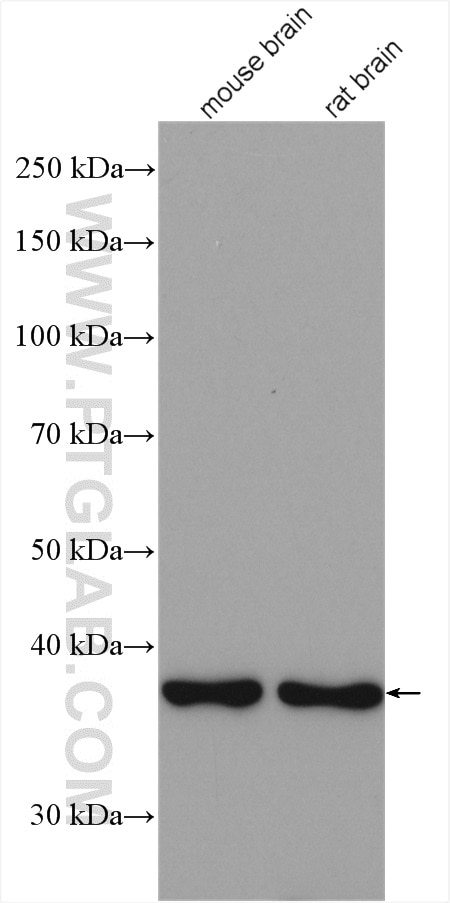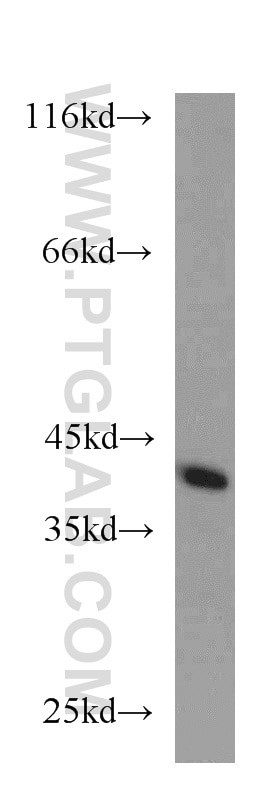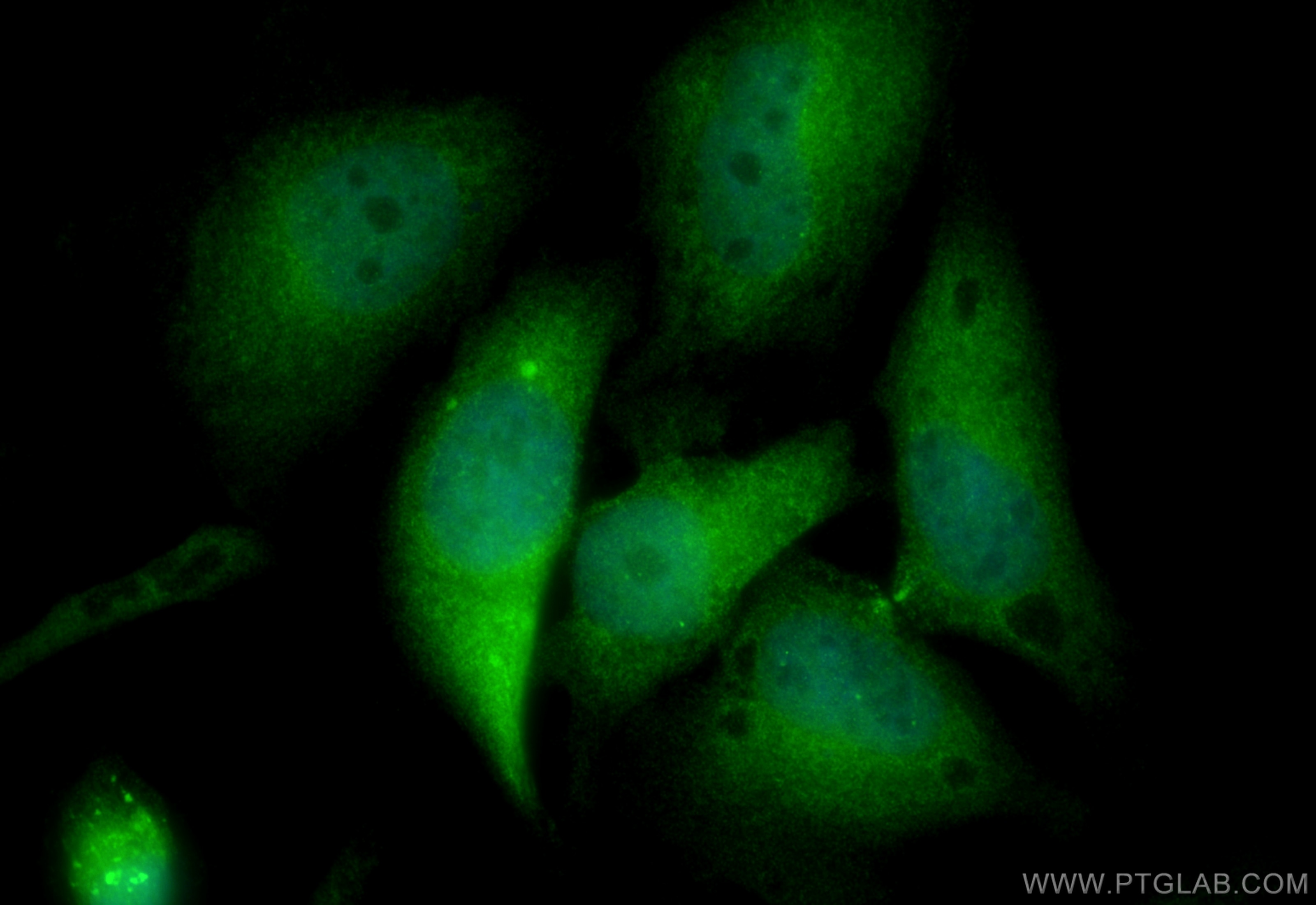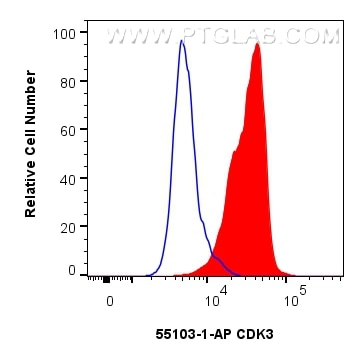Anticorps Polyclonal de lapin anti-CDK3
CDK3 Polyclonal Antibody for WB, IHC, IF/ICC, FC (Intra), ELISA
Hôte / Isotype
Lapin / IgG
Réactivité testée
Humain, rat, souris
Applications
WB, IHC, IF/ICC, FC (Intra), ELISA
Conjugaison
Non conjugué
N° de cat : 55103-1-AP
Synonymes
Galerie de données de validation
Applications testées
| Résultats positifs en WB | tissu cérébral de souris, cellules Jurkat, cellules MCF-7, tissu cérébral de rat |
| Résultats positifs en IHC | tissu de cancer du sein humain il est suggéré de démasquer l'antigène avec un tampon de TE buffer pH 9.0; (*) À défaut, 'le démasquage de l'antigène peut être 'effectué avec un tampon citrate pH 6,0. |
| Résultats positifs en IF/ICC | cellules HeLa, |
| Résultats positifs en FC (Intra) | cellules HeLa, |
Dilution recommandée
| Application | Dilution |
|---|---|
| Western Blot (WB) | WB : 1:1000-1:4000 |
| Immunohistochimie (IHC) | IHC : 1:100-1:400 |
| Immunofluorescence (IF)/ICC | IF/ICC : 1:200-1:800 |
| Flow Cytometry (FC) (INTRA) | FC (INTRA) : 0.25 ug per 10^6 cells in a 100 µl suspension |
| It is recommended that this reagent should be titrated in each testing system to obtain optimal results. | |
| Sample-dependent, check data in validation data gallery | |
Applications publiées
| WB | See 4 publications below |
| IHC | See 1 publications below |
Informations sur le produit
55103-1-AP cible CDK3 dans les applications de WB, IHC, IF/ICC, FC (Intra), ELISA et montre une réactivité avec des échantillons Humain, rat, souris
| Réactivité | Humain, rat, souris |
| Réactivité citée | Humain, souris |
| Hôte / Isotype | Lapin / IgG |
| Clonalité | Polyclonal |
| Type | Anticorps |
| Immunogène | Peptide |
| Nom complet | cyclin-dependent kinase 3 |
| Masse moléculaire calculée | 35 kDa |
| Poids moléculaire observé | 40-45 kDa |
| Numéro d’acquisition GenBank | NM_001258 |
| Symbole du gène | CDK3 |
| Identification du gène (NCBI) | 1018 |
| Conjugaison | Non conjugué |
| Forme | Liquide |
| Méthode de purification | Purification par affinité contre l'antigène |
| Tampon de stockage | PBS with 0.02% sodium azide and 50% glycerol |
| Conditions de stockage | Stocker à -20°C. Stable pendant un an après l'expédition. L'aliquotage n'est pas nécessaire pour le stockage à -20oC Les 20ul contiennent 0,1% de BSA. |
Informations générales
CDK3 belongs to the protein kinase superfamily, CMGC Ser/Thr protein kinase family and CDC2/CDKX subfamily. It is probably involved in the control of the cell cycle. CDK3 interacts with a yet unknown type of cyclin. It can phosphorylate histone H1. Endogenous Cyclin C/Cdk3 complexes are critical to promote exit from quiescence in an Rb-dependent manner. Cyclin C/Cdk3 complexes is a key regulators of cell cycle reentry in human cells. (PMID: 15130482 )The antibody is specific to CDK3.
Protocole
| Product Specific Protocols | |
|---|---|
| WB protocol for CDK3 antibody 55103-1-AP | Download protocol |
| IHC protocol for CDK3 antibody 55103-1-AP | Download protocol |
| IF protocol for CDK3 antibody 55103-1-AP | Download protocol |
| Standard Protocols | |
|---|---|
| Click here to view our Standard Protocols |
Publications
| Species | Application | Title |
|---|---|---|
Cell Chem Biol CDK2 heterobifunctional degraders co-degrade CDK2 and cyclin E resulting in efficacy in CCNE1-amplified and overexpressed cancers | ||
Cancer Med Identification of an EMT-related gene-based prognostic signature in osteosarcoma | ||
Cell Death Discov Up-regulation of SLC27A2 suppresses the proliferation and invasion of renal cancer by down-regulating CDK3-mediated EMT. | ||









